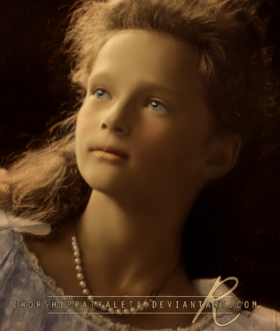-
ALEXANDER PALACE - Saint Petersbourg

ALEXANDER PALACE
In one of the most picturesque suburban parks--the Alexander Park in Tsarskoe Selo (the Tsar's Village)--there is a palace that until recently used to be a kind of a pretty set piece enchanting the park. The doors were closed, and only a few people knew the story behind this unusual setting. However, the Alexander Palace as well as the events that took place in it played one of the leading roles in the life of the Russian monarchy before its sunst: the palace was the last home of the last Russian tsar, Nicholas II.


Emperor Nicholas II and Empress Alexandra Feodorovna
The taste in art of Nicholas II and Alexandra Feodorovna was an item of constant criticism until recently. In fact, the suite of rooms where Nicholas II and his family lived were not much to look at in terms of dainty decoration or stylistic purity and were "stuffed [...] with mass-produced things typical for the upper-class", according to the post-revolutionary cliche. However, after learning more about the life of the Imperial family in the Alexander Palace, it becomes clear that homemaking and the warmth of family bonds mattered for Nicholas and Alexandra Feodorovna more than fashionable decoration: it is interesting to note that the living rooms of the palace in Tsarskoe Selo, which became their beloved home, were created in two stages in the 1890s and 1900s and their decoration and furniture practically did not change for years.
Nicholas and his young spouse came to Tsarskoe Selo a week after their wedding and settled down in the rooms of the right wing of the Alexander Palace, where the heir-tsesarevich spent his childhood. The Emperor made an emotional entry in his diary about this trip: "at 3 o'clock Alix and I set off to Tsarskoe", wrote Nicholas II on November 22, 1894. "The weather was sunny and cheerful. [...] At the platform in Alexandrovskaya we were met by the commander of the troops and a great number of residents of Tsarskoe. When we were approaching the Alexander Palace, it started raining. I occupied my old rooms, and my Alix settled in Mama's rooms. It's an inexpressable pleasure to lead a quiet life without meeting anyone, being day and night together!" And two days later he records: "There are no words to describe the delight of being together in such a wonderful place as Tsarskoe!"
From that time, the Alexander Palace would always be a special place, where the family of Nicholas II would settle permanently several years later.
The decoration of the rooms of the left wing of the palace, where the Tsar’s family would move in, started in 1895. By September, the Pallisander Room and the Mauve Cabinet, as well as the Restroom and the Cabinet of Nicholas II had been completed. “Having looked around our new rooms, we started tidying up”, records the Emperor in his diary, “by 6 o’clock we finally finished this ordeal […] Had lunch […] in the dining room […], in the evening sorted out Alix’s things and books in the mauve room, where I read for her in the evenings”.

The Mauve Cabinet became the favourite room of the Empress
“The room of Her Majesty known as Le Cabinet Mauve de’l Imperatrice, wrote Lily Dehn, Alexandra Feodorovna’s close friend, “was a splendid room which revealed its owner’s affection to all shades of violet. In spring and winter time the air was full of the aroma of lilacs and lilies-of-the-valley, which were delivered to the Palace daily by baskets from the Riviera”.
The Mauve Room--the Lilac or Mauve Cabinet would become the Empress's favourite room, a meeting place of the whole family in the evenings. Here Nicholas would come for a cup of evening tea, here the Empress would often play the piano with Anna Vyrubova. Here would be accommodated Alexandra Feodorovna's personal library numbering over a thousand volumes of mostly philosophical, religious and mystical literature. In this room Alexandra Feodorovna would spend most of her time doing needlework, reading, and sorting out letters.
But all this is in the future, meanwhile, on December 24, 1895 a young couple set up "their first Christmas tree" in a "new Alix's room". By that time the room had already been fully decorated, and the decorations did not change for many years: the walls were draped in mauve silk and finished with a frieze of painted irises. On the shelf of the corner sofa, on the cupboards and the mantelpiece there were numerous photographs and china, glass and stone articles. All things in the Empress's rooms were somehow related to the events of the family or civil life--they were presents from Nicholas II, the children, friends and servants. Among the articles in the private rooms were the things presented to the Imperial couple or bought at art exhibitions in Moscow or Petersburg or as souvenirs brought their trips within Russia.

The Palisander Room was also used as a dining room for the Imperial family
Next to the Mauve Cabinet was the Bedroom, the walls of which were also draped, but in English chintz, which was considered to be very hygienic. In the niche there was an alcove with a wall fully covered with icons, miniature icons and crosses--presents from communities, troops and private individuals. The devoutness of the Empress, which increased due to the fatal disease of the long-awaited heir, is well known, and the private rooms of the Alexander Palace were full of arks and screens for icons: in the Bedroom alone there were more than 700 icons and miniature icons.
The Empress's suite also included the Palisander Room created between 1896 and 1898. Its walls were draped in French silk and lined with palisander panels at the bottom. A large beautiful fireplace was also made of palisander, which gave the name to the room. Since there was no special room for dining in the palace (the Dining Room in the suite of Nicholas II, created in the 1890s, was used as a reception room) dinners for the Imperial family were served in the Palisander Room.

The Imperial Bedroom contained over 700 icons
All interior designing in the Palace was supervised by Alexandra Feodorovna who was an affectionate homemakers and who placed the things in the state and private rooms not according to the rules of interior design, but exclusively on the grounds of convenience and comfort which distinguished the rooms.
However, the Imperial coule had a developed artistic taste and would make the most interesting choice out of alternatives proposed by the architects. This was the case with the designs of the entrance gate to the Alexander Palace proposed by S.A. Danini, when the Emperor picked the design that better matched the building. It was the case when in 1909 the architect proposed to the Empress two designs of chairs for the Oval Hall where the family gathered for Sunday and formal breakfasts.
Four dozen of these chairs coated with varnish and finished with gilded fretwork were manufactured at the famous St. Petersburg furniture factory of F. Meltser.

The Maple Room connected the room of the Empress with the State Cabinet of the Emperor
The most significant interior design projects in the Alexander Palace are associated with the brothers R. & F. Meltser: the furniture for all the private rooms of the Alexander Palace was manufactured at the factory of the palace supplier according to the designs of the palace architect.
Among the masterpieces made by the Meltsers are the state rooms of the Royal couple created between 1903 and 1906: the New (State) Cabinet of Nicholas II and the Maple Room of the Empress.
The Maple Room is one of the best examples of interiors designed in the style of Russian Art Nouveau. A huge room was divided into several cozy areas; here the family used to assemble in the evenings: the younger children played, the elder ones were engaged in needlework or reading. The room had an entresol decorated with woodwork were Alexandra Feodorovna did needlework or painted. The entresol of the Maple Room connected the room of the Empress with the State Cabinet of the Emperor. Alexandra Feodorovna could pass through it to the suite of Nicholas II and be present at his meetings with ministers and friends without being noticed. Unfortunately, the decoration of this beautiful room was destroyed during the war, and it is for us to see the Maple Room only in pre-war photographs.

The State (New) Cabinet of Nicholas II
Some of the original decor of the State (New) Cabinet of Nicholas II have been preserved: mahogany panels, fireplaces, the entresol with marble columns, the ceiling with brass plating. The decoration of the walls and the furniture have been restored on the basis of photographs and precise measurements, and now one can see the room as it used to be at the time of its last owner. A large formal portrait of Alexander III by V. Serov, numerous pieces of Dutch and Russian china, miniatures, photographs, carpets and fabrics evacuated and thus saved have returned to their places to make one feel the atmosphere of the early 20th century.
The F. Meltser's factory also supplied furniture for the children's rooms and staff rooms on the first floor. The furniture painted to imiitate ivory and the furniture made of ash, oak, and "green maple" was simple, convenient and functional.
Most of the decorations, the furniture and numerous personal items in the private rooms of the last owners of the Alexander Palace, which gave an idea not only of the tastes of the Royal couple but also about the artistic trends in Russia at the turn on the century, perished during the war. Some of the preserved items are yet to return to their historic places to bring them to life in the flavour of the past epoch.
However, the Alexander Palace has stopped being a phantom, and we hope that these things that belonged to the owners of the Palace and witnessed the shocking and dramatic events of the 20th century will return home where they belong for future generations to enjoy.
Authors: L. Bardovskaya & I. Bott ~ Авторы-составители: Л. Бардовская, И. Ботт
© The State Museum - Tsarskoye Selo ~ © ГМЗ ~ Царское Селоsources
http://www.angelfire.com/pa/ImperialRussian/royalty/russia/aplasthome.html
 Tags : room, alexandra, palace, with, nicholas
Tags : room, alexandra, palace, with, nicholas
-
Commentaires
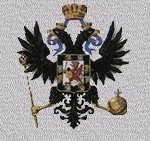

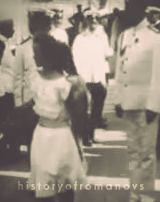
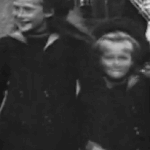
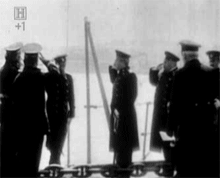

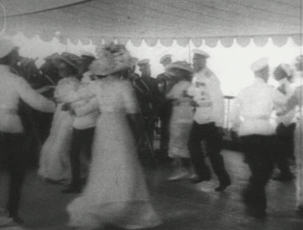




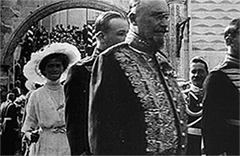 nos
nos




